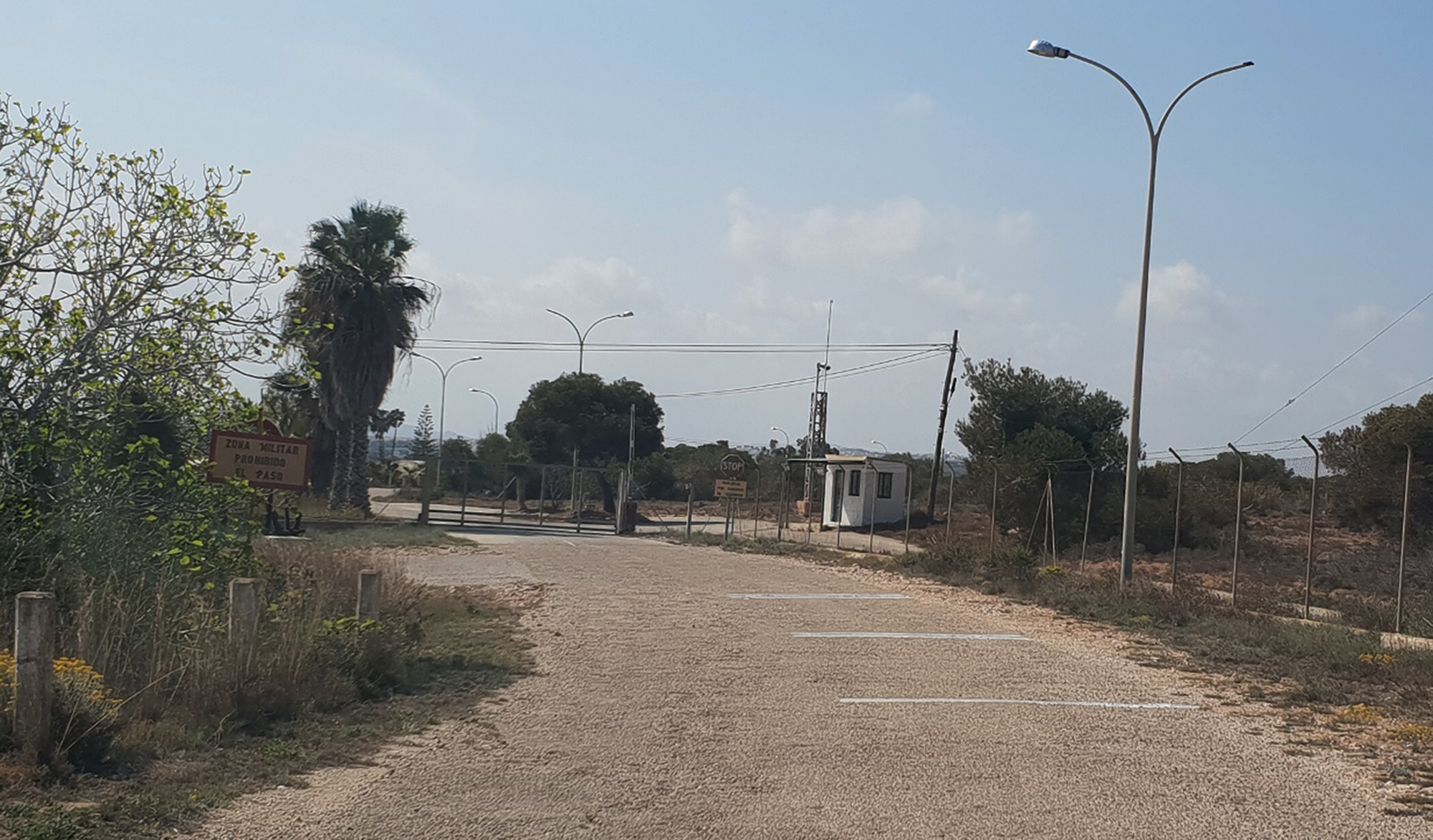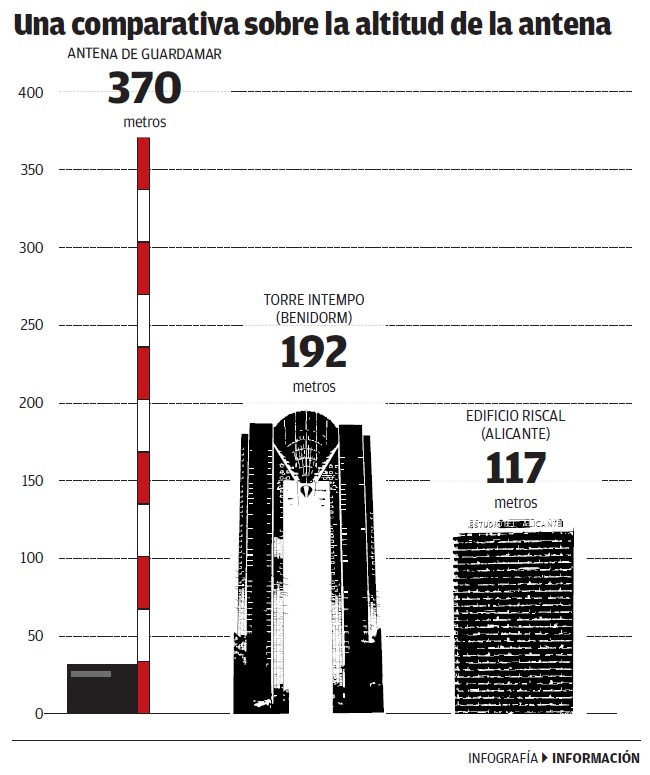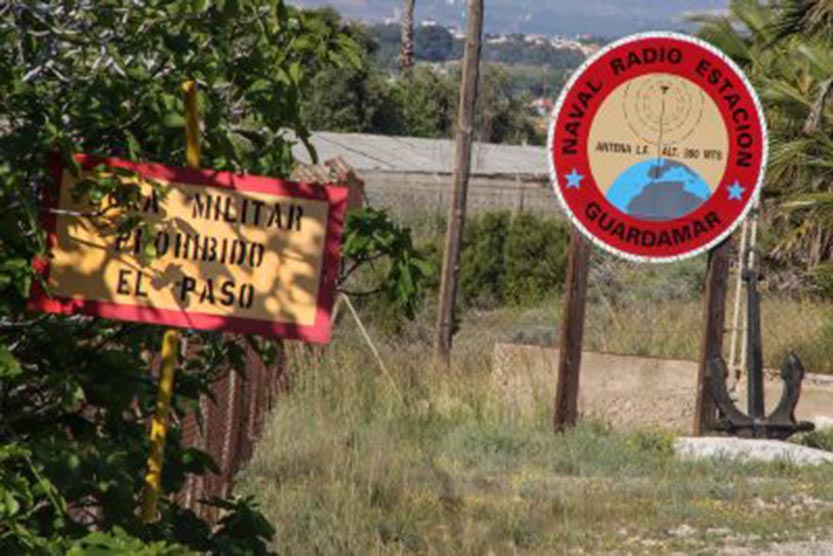Just to the south of Guardamar del Segura, inland of the N332, there is a compound that is surrounded by a perimeter of secrecy. Posters and signs warn that it is a prohibited area, a military zone and to which, over the last 50 years, there have been very few people who have gained admittance and learn the secrets of it’s inner chambers.

But you will all be aware of the facility because its location is marked by an imposing aerial of over 370 metres in height, 475 metres above sea level. The tallest architectural structure in both the Iberian Peninsula and the European Union, it is known as the Tower of the Americans or Torreta de Guardamar.
Originally built between 1963 and 1965 by the United States Army the base accommodates a radio station, the main purpose of which is to maintain contact with the underwater fleet, submarines from all over the Mediterranean Sea.
Although today it serves the interests of the maritime branch of the Spanish Armed Forces, there was a time when it was controlled exclusively by the Americans, who posted soldiers into Guardamar to support its operation and maintenance.
It was after the Second World War, during the Cold War when, in order to achieve a position of supremacy, the United States expanded its military bases on both sides of the Atlantic.

The Guardamar site, due to its strategic position and proximity to the Straits of Gibraltar, ideally suited the objectives of the US Navy as a result of which a Spanish-American agreement was signed in 1953. It was the so-called “Pact of Madrid” that made the construction of the Guardamar Radio Station possible, finally entering service in 1965.
Its main mission was, and continues to be, the transmission of data to and from the underwater fleet. It is now remotely controlled by the US Naval Communication Station in Rota.
The operation of the installation was carried out by a section of 20 or so officers and men posted in by the United States Navy. They worked inside the base, but were quartered in private accommodation in the town. In the early days at least two of them ended up marrying locally, one of them, a sergeant responsible for the electronic maintenance of the transmitters joining the unit on the day that it first opened. “At that time there were 17 American servicemen working at the base,” he recalls.

Last year, for the very first time, the Ministry of Defence actually authorised a series of three guided visits to the base by local residents, finally ending the secrecy that has enveloped the site for more than half a century.
“We have lived with the antenna since it was first installed over 50 years ago, but until those first visits in 2018 it was a great unknown” said the mayor of Guardamar, José Luis Sáez.”
“So far only three guided visits have actually been authorised, he said, “and the council is still waiting for permission to organise more. The expectation that has been awakened by the activity is very high and we are continually receiving requests from people who wish their names to be added to the list for the next visit,” added the mayor.
“In Guardamar we have lived with the aerial since it was first erected, but in reality it is still a great unknown to many residents, because they do not know what is inside the base, who operates it and exactly what the functions are,” Saez continued. “and the information that appears on the Internet is very limited. On Google maps the area is also completely blurred, thus preserving the mystery that has always surrounded the American Tower.”
Some of the older residents in the town tell that it was a group of Indians who came to the municipality to help with the assembly of the 370-metre antenna, and they are absolutely correct.

The American who served in the base between 1965 and 1968, confirmed that it was a tribe of American Indians from Oklahoma state who built the tower, the reason for which was their superior sense of balance, their agility and their ability to climb the structure as it was going up.
Its early use and maintenance was the exclusive responsibility if the US Navy, but in July 1982 a memorandum of understanding between the two countries for joint use was signed. In 1990 the site was finally handed over in its entirety to the Spanish Navy.
The installation, now renamed “Camp Santa Ana”, is currently guarded by Spanish Infanteria de Marina.





